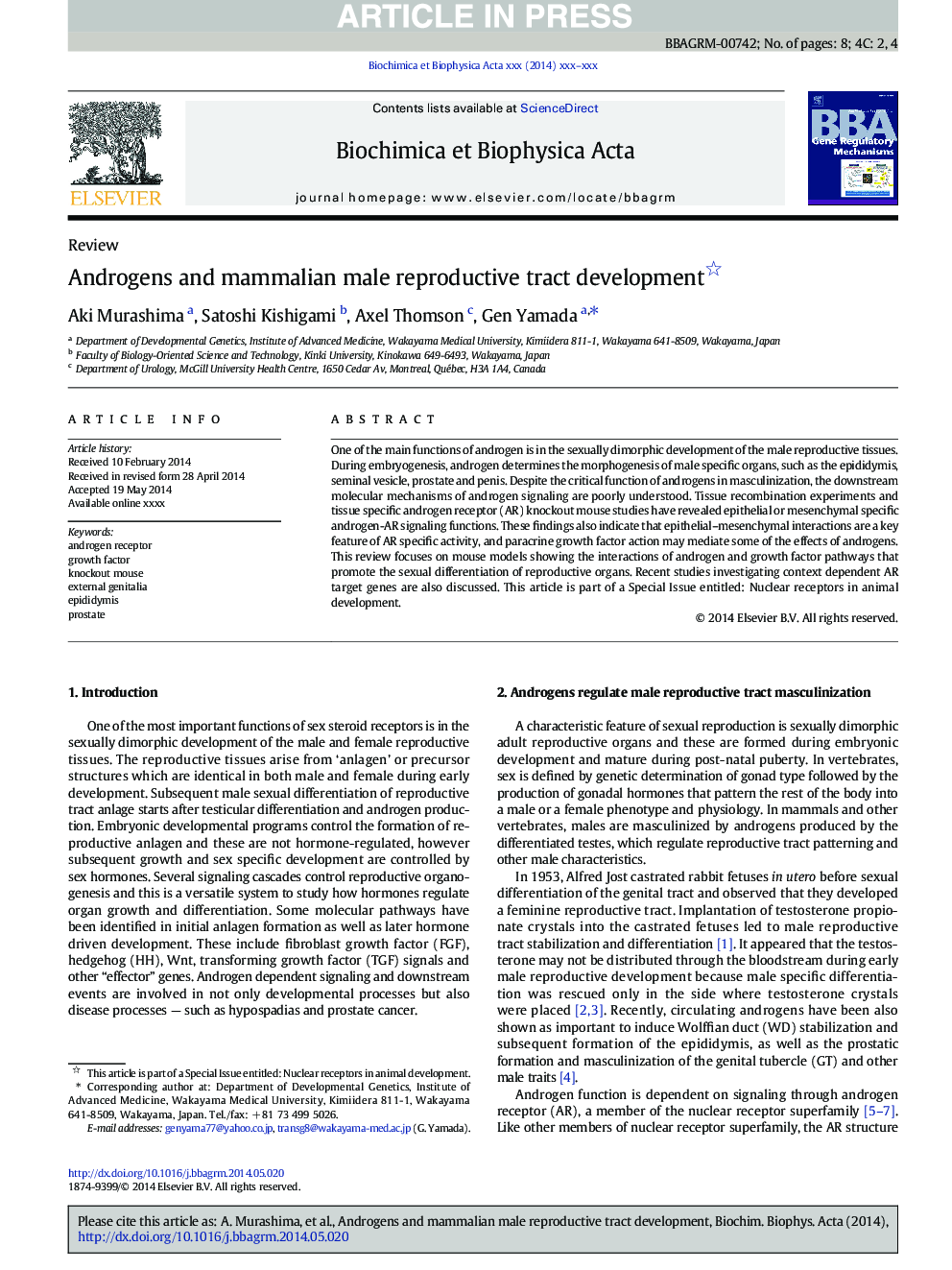| Article ID | Journal | Published Year | Pages | File Type |
|---|---|---|---|---|
| 10799068 | Biochimica et Biophysica Acta (BBA) - Gene Regulatory Mechanisms | 2015 | 8 Pages |
Abstract
One of the main functions of androgen is in the sexually dimorphic development of the male reproductive tissues. During embryogenesis, androgen determines the morphogenesis of male specific organs, such as the epididymis, seminal vesicle, prostate and penis. Despite the critical function of androgens in masculinization, the downstream molecular mechanisms of androgen signaling are poorly understood. Tissue recombination experiments and tissue specific androgen receptor (AR) knockout mouse studies have revealed epithelial or mesenchymal specific androgen-AR signaling functions. These findings also indicate that epithelial-mesenchymal interactions are a key feature of AR specific activity, and paracrine growth factor action may mediate some of the effects of androgens. This review focuses on mouse models showing the interactions of androgen and growth factor pathways that promote the sexual differentiation of reproductive organs. Recent studies investigating context dependent AR target genes are also discussed. This article is part of a Special Issue entitled: Nuclear receptors in animal development.
Related Topics
Life Sciences
Biochemistry, Genetics and Molecular Biology
Biochemistry
Authors
Aki Murashima, Satoshi Kishigami, Axel Thomson, Gen Yamada,
